We Are Not Helping Boys Get Through Puberty
Gender-neutral guidebooks are not the answer for assisting boys with their unique developmental needs in a post-ritual age.
Reality’s Last Stand is a reader-supported publication. Please consider becoming a paying subscriber or making a one-time or recurring donation to show your support.
Most people attuned to the zeitgeist recognize at some level that young men and boys coming of age today are struggling, particularly those from working class backgrounds but across all socio-economic levels. Their college enrollment and graduation numbers have fallen well behind those of women. Many can’t find or hold down jobs. They’re addicted to drugs or pornography. They make unreliable relationship partners, and alarming numbers have shirked their responsibilities as fathers. Some who self-identify as involuntarily celibate (“incel”) have succumbed to the lure of manosphere misogynists like Andrew Tate. The ones who have completely given up on life commit suicide at disturbing rates; or they die from a fentanyl overdose, commonly referred to as a “death of despair.”
Many explanations for this phenomenon are on offer, from economists and sociologists, from political scientists, and from those with large followings on social media platforms. The transfer of manufacturing jobs overseas, we are told, has deprived working class men of their livelihood as well as the opportunity to build a sense of masculine self-worth as providers. The structure of the education system discriminates in favor of girls. Decades of affirmative action on behalf of women has left men with fewer opportunities. Some blame the vast Internet porn industry for addicting young men to unrealistic fantasies about sex, rendering them ineffective suitors and sex partners in real life. Others blame a culture steeped in “toxic masculinity.” At the same time, we also hear about a cultural war on boys and men. Some say we’re living through a misandrist age that demonizes masculinity itself.
No single explanation can account for the plight of young men today, and most of these theories provide at least some degree of insight. I’d like to add my own theory to the explanatory mix: For the last four or five decades, I believe, Western societies have done an increasingly poor job of helping boys to navigate puberty and the transition into manhood. In particular, we do little to help them master the dramatic changes worked upon their minds and bodies by testosterone, to help them channel aggressive/competitive drives into positive achievement, and to develop a strong masculine sense of self with a responsibility to protect and serve the interests of others.
To a significant degree, it is the persistence of blank slate views of masculinity and femininity, despite the increasing acceptance of evolutionary psychology in other areas, that accounts for why our societies have been failing boys and young men for decades now.
As Exhibit A demonstrating the dominance and power of the blank slate view, I offer my own encounter with the world of New York publishing seven years ago. I had previously published two works of non-fiction, and I intended my next book to explore positive aspects of masculinity; back in 2018, I believed (and still believe now) that the good things about men were being overlooked in a heated climate that focused on toxic masculinity, #MeToo, the patriarchy, and rape culture on campus. My agent sent my book proposal to 17 editors, all of whom rejected it with strikingly similar complaints. I was repeatedly told that I had failed to acknowledge masculinity as entirely social constructed, one our culture could mold into whatever shape it wanted. Furthermore, my inclusion of a chapter on evolutionary psychology and how it influences modern masculinity rendered me a “biological essentialist,” which I came to understand is a despicable thing to be.
Theories based on biological essentialism have been relied upon in the past to oppress women and deny them equal rights. Women are intellectually inferior to men, such theories hold. Their anatomy destines them to bear children and remain at home as caretakers. Women are by nature physically weak and therefore predisposed to be submissive. Their hormonal cycles and emotional volatility make them unfit for leadership roles and positions of power. And so on.
Biological essentialism has an understandably bad name.
The subsequent reaction against it, however, has made it impossible to discuss virtually any biologically based differences between men and women. Take, for instance, the robust finding, widely reproduced in many studies and across cultures, that men on average tend to be more interested in things than people, while for women the reverse holds true (Su et al., 2009). In 2017, James Damore was fired from Google after he wrote and internally distributed a 10-page memo discussing this very point.
"Women, on average,” he wrote, “have more openness directed towards feelings and aesthetics rather than ideas. And they generally have a stronger interest in people rather than things, relative to men (also interpreted as empathizing vs. systemizing).” He then linked this finding to career choices made by men and women: “These differences in part explain why women relatively prefer jobs in social or artistic areas. More men may like coding because it requires systemizing ...” (Damore, 2017, emphasis added in both quotations). For the crime of articulating a well-established scientific truth and applying it to employment statistics at Google, he was vilified by his colleagues and fired by the company.
Harvard lecturer and evolutionary biologist Carole Hooven also found out the hard way that discussing basic sex differences can cost you your job. Shortly after the publication of her book T: The Story of Testosterone, the Hormone that Dominates and Divides Us, Hooven made an appearance on Fox & Friends. During the interview, she stated that biological sex is binary and determined by the size of gamete produced (sperm or eggs)—a view familiar to readers of this Substack. Hooven’s views sparked outrage among some Harvard students and staff, including those who labeled her comments “transphobic” and “dangerous” on social media. Teaching assistants refused to work with her, and the administration failed to support her. In 2023, the ongoing ostracism finally led her to resign from her position in the Department of Human Evolutionary Biology where she had taught for more than 20 years
In short, we are not permitted to speak about the reality of biological sex differences, or to acknowledge the differing effects of male vs. female sex hormones upon our bodies, minds, and emotions.
Which brings us back to young men and boys coming of age, my main area of concern. Given the current anti-biology zeitgeist, it comes as no surprise that we have failed to help pubescent boys cope with the effects of testosterone coursing through their veins. How can we help them if we insist there are no significant differences between boys and girls, that masculinity and femininity are both oppressive social constructs which can be reshaped in whatever way our society sees fit? How can we help them manage their testosterone-fueled surge in physical and psychic energy if we turn a blind eye to its effects?
Another robust and widely reproduced finding is that men (and other male primates) are, on average, more aggressive, competitive, and prone to taking risks than women, a difference that becomes more pronounced with the rise in male testosterone levels at puberty (Archer & Coyne, 2005). These traits have evolved over millennia through the sexual selection process: males must compete with other males for limited mating opportunities, and those who are physically strong and more aggressively competitive are more likely to succeed.
As Hooven explains, “testosterone’s primary job is to coordinate male sexual anatomy, physiology, and behavior in the service of reproduction. For many male animals that must compete for mates, … one of the behaviors that most directly supports reproduction is aggression” (Hooven, 2021, p. 157). Testosterone also fuels the male propensity for greater risk-taking: those who take risks by demonstrating courage in the face of peril will raise their status among females should they succeed, thereby increasing their odds in the competition for access to mates.
Faint heart never won fair maid.
Or maybe–go big or go home alone.
Cultural norms and expectations will shape how these impulses are expressed, of course. It’s nature as well as nurture. “One of the primary functions of human culture is to help young people to become responsible, self-aware adults. Maturity means, among many other things, an ability to calibrate your behavior in a way that renders it appropriate to the circumstances. To be a grown-up means learning how to temper our own natures” (Reeves, 2022, p. 102). Although the sociologist Richard Reeves is speaking here of human nature in general, the actual focus of his work is the maturation of boys into men and what a society can do to facilitate that process.
The anthropologist David Gilmore (as quoted by Reeves) is eloquent on this subject: “Real men do not simply emerge naturally over time like butterflies from boyish cocoons; they must be assiduously coaxed from their juvenescent shells, shaped and nurtured, counseled and prodded into manhood” (Gilmore, 1990, as cited in Reeves, 2022, p. 96). In his classic study Manhood in the Making, Gilmore details the many rituals and rites of passage relied upon by cultures around the world to mark this transition from boy to man. Across these cultures:
…there is a constantly recurring notion that real manhood is different from simple anatomical maleness, that it is not a natural condition that comes about spontaneously through biological maturation but rather is a precarious or artificial state that boys must win against powerful odds. This recurrent notion that manhood is … a critical threshold that boys must pass through testing, is found at all levels of sociocultural development … It is found among the simplest hunters and fishermen, among peasants and sophisticated urbanized peoples; it is found in all continents and environments. It is found among both warrior peoples and those who have never killed in anger (Gilmore, 1990, p. 48).
Within non-state cultures, passing the threshold into manhood often involves rituals that begin by separating a group of pubescent boys from their mothers, thereby marking the end of childhood; these initiates are then subjected to ordeals that test their courage and reward stoicism in the face of pain—traits valued by tribes reliant upon their men for defense against enemies. Such rituals also integrate these newly minted men into the tribe’s male hierarchy and teach them its values, standards, and sacred knowledge. Membership in the man group confers status but also calls for a commitment to upholding codes of behavior and accepting one’s responsibilities to the tribe.
Evolutionary pressures may have shaped men to be aggressive, competitive, and prone to risk-taking (all in the service of gaining access to desirable mates), but ongoing strife between males will be disruptive to the social order. Tribes and clans found ways to regulate such conflict by redirecting aggression outward, toward enemies, or for the purpose of stalking game. A shared ordeal in the form of puberty rites reduces chaotic conflict between men, promotes social cohesion, and calls upon young men to deploy their aggressive drives in defense of the tribe and its values. It provides them with an identity and encourages them to channel competitive aggression into socially sanctioned goals.
Despite what Gilmore asserted more than 30 years ago about the universality of these transition-focused phenomena, modern Western culture does not appear to have many rituals or rites of passage, few signposts marking that point in time when a boy becomes a man. Young Jews may have a bar mitzvah, but in the secular West, most boys just get their driver’s license and graduate from high school … but so do girls. What about financial self-sufficiency? With their university and post-graduate studies often extending adolescent dependence well into their 20s, many young men don’t achieve such self-sufficiency until a relatively advanced age. Fraternity house hazing of new members and the brutal endurance test that is boot camp mark some kind of ritualized transition but they’re neither universal nor broadly admired in our culture.
More than 100 years ago when the Boy Scouts Movement began, it was “formed by a group of men who [were] anxious that the boys of America should come under the influence of this movement and be built up in all that goes to make character and good citizenship” (Boy Scouts of America, 1911, p. v). However it may have evolved since then, the Boy Scouts of America (BSA) began as an organization to help boys acquire the skills, character traits, and values necessary to become a good man in America. At its outset, belonging to the BSA could be seen as an extended rite of passage for adolescent boys.
A chapter in the original 1911 BSA handbook entitled “Chivalry” traces the organization’s roots back to Arthurian knights who supposedly felt “it was the duty of the stronger to help the weak. These were the days when might was right, and the man with the strongest arm did as he pleased, often oppressing the poor and riding rough shod without any regard over the feelings and affections of others” (Boy Scouts of America, 1911, p. 237). Via chivalric values, natural masculine aggression was thus harnessed to protect the weak against the unbridled aggression of other ruthless men. “Chivalry then was a revolt against their brutal acts and ignorance and a protest against the continuation of the idea that might was right” (Boy Scouts of America, 1911, p. 237).
Here we see how cultural values may shape and direct a growing young man’s natural aggression for the benefit of society. According to the 1911 BSA guidebook, King Arthur and his knights “cleared the forests of wild animals, suppressed the robber barons, punished the outlaws, bullies, and thieves of their day, and enforced wherever they went a proper respect for women” (Boy Scouts of America, 1911, p. 238). As a result, a grateful society held them in high esteem.
To join the round table and become a full knight, each boy had to pass through several stages that resemble the rites of passage described by Gilmore and other cultural anthropologists. Usually from a noble family, he first had to separate from his parents and take up service in the household of another lord. As a page, he was expected to master a set of skills and demonstrate good conduct before advancing to squire where he would serve as apprentice to a knight. Then, after training intensively in combat, horsemanship and chivalric ideals, he underwent a ceremony known as dubbing or accolade which conferred full knighthood status upon him.
With its hierarchical structure, the original Boy Scouts of America appeared to recreate such a system by which boys were trained to become men: scouts were required to demonstrate mastery of skills through the earning of badges while progressing through the various status levels from Tenderfoot through Second Class, First Class, Star, Life, and ultimately Eagle Scout. A boy scout must also be “in the pink of condition.” To do so, he must exercise regularly, get enough sleep, and “take a cold bath, often rubbing dry with a rough towel. … He should at all times train himself to endure hardships” (Boy Scouts of America, 1911, p. 8).
The commitment to doing one good turn daily reflects a boy scout’s responsibility “toward the social betterment of the community in which he lives. … It is not alone in big things but in the little things as well that the really great work is done” (Boy Scouts of America, 1911, p. 350). Like pubescent boys undergoing rites of passage in many hunter-gatherer cultures, the boy scout must learn to channel his energies toward the betterment of his community and servicing the needs of his tribe.
On matters of sexuality, the 1911 guidebook says little, but its heavy emphasis on chivalric attitudes toward women implies some dark force that must be countered. If the goal of the BSA is to correct bad behavior where “might was right, and the man with the strongest arm did as he pleased” (Boy Scouts of America, 1911, p. 237), it follows that an unchivalrous man driven by sexual desire would force himself upon women without regard to their sensibilities. Instead of indulging such impulses, the boy scout should sublimate raw lust into a drive to protect.
What little direct guidance the 1911 guidebook has to offer on mastering the male sex drive at puberty comes across as somewhat prudish and is framed within a holistic scout ethos concerning purity and self-restraint:
In the body of every boy, who has reached his teens, the Creator of the universe has sown a very important fluid. This fluid is the most wonderful material in all the physical world. Some parts of it find their way into the blood, and through the blood give tone to the muscles, power to the brain, and strength to the nerves. This fluid is the sex fluid (Boy Scouts of America, 1911, p. 232).
This most wonderful of all materials works a remarkable change in a growing boy. Not only does it strengthen his mind and body but “his ideals are changed and enlarged” (Boy Scouts of America, 1911, p. 232).
For this reason, one must not hold…
…the wrong ideas of this important function, because they will lower his ideals of life. … Any habit which a boy has that causes this fluid to be discharged from the body tends to weaken his strength, to make him less able to resist disease, and often unfortunately fastens upon him habits which later in life he cannot break (Boy Scouts of America, 1911, p. 232-233).
And how is one to avoid developing bad habits and to retain one’s manly virtue?
To become strong, therefore, one must be pure in thought and clean in habit. This power which I have spoken of must be conserved, because this sex function is so deep and strong that there will come times when temptation to wrong habits will be very powerful. But remember that to yield means to sacrifice strength and power and manliness (Boy Scouts of America, 1911, p. 233).
Readers with a need for further edification on this topic are directed to a different guidebook, one written by a medical doctor, providing practical advice on personal hygiene, physical development, and moral conduct for the adolescent male.
With its emphasis on the acquisition of skills, training of the body, and purification of mind, the BSA guidebook is ultimately about self-mastery, the most important ability any adolescent male going through puberty must acquire. In that sense, it is the original puberty guide written for boys.
Since its founding, the BSA has progressively shed this focus on boys and finally adopted a gender-neutral stance. In October 2017, the organization announced plans to welcome girls into the ranks. BSA membership had dwindled over the preceding decades, so including girls would obviously strengthen its numbers; but the primary justification given by leadership for this switch had an equity flavor to it: “I’ve seen nothing that develops leadership skills and discipline like this organization,” said Randall Stephenson, the group’s national board chairman. “It is time to make these outstanding leadership development programs available to girls” (Boy Scouts of America, 2017). In 2025, the group rebranded itself as Scouting America, a gender-neutral name.
Its current emphasis has shifted to the development of leadership skills in all its members, regardless of their sex. The current guidebook emphasizes personal growth and the honing of interpersonal skills for all young people rather than acquiring skills and building character traits that might have special salience for boys. While the original Scout Law has been retained along with its emphasis on trustworthiness, bravery, and community service, the Scout Oath can now be faithfully recited by anyone. In short, the BSA has evolved to focus on what adolescents have in common, male or female, rather than exploring the distinctive nature of boys and addressing their specific needs as they mature into men.
Outside of sports, there are fewer and fewer opportunities for children and adolescents to engage in sex-segregated activities. Over the last century, the number of single sex schools has dwindled, clubs such as Rotary which began as boys-only have gone co-ed, and single sex camps like Camp Dudley or Camp Aloha are outliers. In addition, the passage of Title IX accelerated coeducation in programs beyond sports; the cultural push for “inclusivity” tends to view any male-dominated endeavor with mistrust, indicating the need to integrate more females to make it equitable.
Despite periodic paeans to the spiritual value of male-only spaces, such as Robert Bly’s Iron John (“only men can initiate men”), such single sex environments are increasingly viewed as breeding grounds for toxic masculinity (Bly, 1990, p. 17). According to a 2019 article from Time magazine, “[r]esearch has shown that all-boys schools can be more sexist environments than all-girls schools or co-ed schools, and that students at boys’ schools display more traditional forms of masculinity and tend to show more respect to male than female teachers” (Luscombe, 2019). The alternative to “traditional forms of masculinity” and initiating boys into manhood implies holding more universal, humanistic expectations for both sexes.
This particular view dominates the world of publishing, as I learned in 2018, and it therefore comes as no surprise to find that most books about male puberty which do get published reflect it. Despite being written for and about adolescent males, contemporary guidebooks focused on boys going through puberty treat them as virtually identical to girls. Of course, there will be the obligatory chapter on the anatomical differences between the sexes accentuated by puberty, but you won’t find guidance on how boys can understand and manage the turbulent mix of competitive urges, aggressive or angry emotions, and a sex drive on steroids, so to speak.
The most obvious unisex approach is to lump boys and girls together into a single guide that addresses a host of cultural and family issues arising during adolescence, with separate chapters for male and female puberty in the mix. This is the method adopted by Robert Winston, a professor at Imperial College London and the host of many BBC series on science. His popular book Help Your Kids with Growing Up: A No-Nonsense Guide to Puberty and Adolescence has many helpful chapters on general issues such as managing one’s online life, developing a positive mental outlook, awakening to the wider world, avoiding recreational drugs, smoking, alcohol, etc., all addressed in a gender-neutral way as if they affect boys and girls in identical ways (Winston, 2017).
Even when discussing traits such as the propensity toward increased risk-taking that are grounded in male biology, Winston opts for gender-neutral language: “Teens are more likely than adults to seek out thrills and to act on impulse” (Winston, 2017, p. 15). Or he avoids gendered nouns altogether: Under the heading Seeking Thrills in the Teen Emotions section, he states: “Feelings of excitement are accompanied by the release of feel-good hormones, such as dopamine. This can result in risk-taking and thrill-seeking behaviour” (Winston, 2017, p. 85). Readers will assume that male and female hormonal processes in this respect are identical, and that adolescent boys and girls will seek thrills and take risks in identical ways, and for the same reasons.
The single mention of increased male aggression is an accurate albeit brief caption beneath a stylized drawing of boys playing sports: “Extra testosterone can dramatically affect a teen boy’s mood, and may lead to mood swings and increased aggression” (Winston, 2017, p. 47). No guidance on how to manage or channel that increased aggression, however. The chapter on Sexuality is also written in gender neutral language (teens, some people); guidance written explicitly for males comes down to a single sentence: “Young men shouldn’t feel anxious about sex lasting a long time or making their partner orgasm. It’s normal for people not to orgasm the first time they have sex ...” (Winston, 2017, p. 219). Otherwise, Winston directs all his information and guidance to gender non-specific teens.
“What’s Happening to Me?” An Illustrated Guide to Puberty adopts a similar both-sexes approach to the topic, with separate sections on the different bodily changes for each sex. When discussing puberty for boys, it makes no mention of aggression/angry feelings, competition, or increased risk-taking. Testosterone, the book tells us, “makes your pubic hair grow and your voice get deeper” (Mayle & Sturgis, 2007, in the What’s an Erection? section). In discussing sperm and ejaculation, we learn that “an erection is your sperm telling you they want to come out” (Mayle & Sturgis, 2007, in the What’s an Erection? section).
The author gets more detailed in the section on masturbation. Girls stimulate their vagina and clitoris while boys…
…do the same with their penis. This usually starts because you’re thinking more and more about the opposite sex. Your imagination creates scenes that cause you to become sexually excited, sexual tension builds up, and that’s when you get the urge to touch and play with yourself. If you rub and caress long enough, you’ll have an orgasm. This is a release of the sexual excitement that has built up inside you. And it’s a great feeling (Mayle & Sturgis, 2007, in the What’s Masturbation? section).
Adolescent boys and girls apparently experience sexual excitement and release in the same way. No mention of the type and frequency of fantasies they may have, how insistent their drives, or any of the other sex-specific feelings that may accompany their urges. Most of the books discussed in this section lay stress upon what the sexes have in common during puberty and pay little attention to the specific effects of testosterone mentioned above by Hooven.
The American Medical Association Boy’s Guide to Becoming a Teen makes the same the same omissions. No mention of increased aggression, competitive drives, or the increased urge to take risks, and no guidance for how to manage them.
The book does contain detailed scientific information about changes to a boy’s body during puberty, with lots of reassurance about how normal it is to masturbate and have wet dreams. But while written exclusively for boys, it nonetheless stresses what adolescent males and females have in common:
You may not realize it now, but underneath it all you still have a lot in common with the girls around you. You’re all going through similar things at school and you’re all dealing with changes in your bodies. Also, you’re all experiencing new emotions and changes in your way of thinking (American Medical Association, 2006, p. 99).
While this may be true, the book makes it seem as if any sex-specific differences arising during puberty aren’t all that important.
In place of promoting chivalric values and urging young men to protect women, we often find injunctions on bad behavior, moralizing statements that threaten boys rather than inspiring them. Another bestselling guide tells boys “it is a very bad idea to pressure a girl into having sex with you if she doesn’t want to. … Using physical force to pressure a person to have sex is called rape. Rape is a crime that is punishable by a prison term” (Gravelle, 2017, p. 62). True enough, but this manual offers no guidance for how to channel those overpowering sex drives other than by absorbing current moral viewpoints. “If she changes her mind and says no, you have to stop – even if you think she’s being unfair” (Gravelle, 2017, p. 63).
No means no.
The issue of consent has been exhaustively discussed by the media within the context of “rape culture on campus”—that is, boys forcing themselves upon unwilling or incapacitated girls—but even in this context, Gravelle strives to make the point appear applicable to both sexes. “Of course, you have the right to change your mind as well. Just because you indicated that you wanted to have sex doesn’t mean you’re obligated to go through with it, no matter what the other person says” (Gravelle, 2017, p. 63). A teenage boy may, on the very rare occasion, feel obligated to go through with having sex when he doesn’t want to, but this feels like a false equivalence. The more insistent and aggressive male sex drive accounts for why the pressure to have sex comes almost exclusively from men.
Gravelle brings a cognitive-behavioral perspective to a boy’s mood swings and emotional outbursts. After acknowledging that such moodiness may have something to do with hormones, it offers the following advice:
If you find yourself flying off the handle at someone, or feeling sad or just very sensitive, ask yourself if you would normally feel this way under similar circumstances. If you would, try speaking to the person who has made you angry or hurt your feelings. But if you wouldn’t be bothered by any of this ordinarily, chalk it up to hormones and try to be patient. The feelings won’t last long, and you’ll be back to normal (Gravelle, 2017, pp. 111-112).
By contrast, the early BSA’s promotion of physical activity, skill mastery, and courteous behavior suggests a more effective way to channel those emotions; after all, how many teenage boys in the grip of a hormonal outburst are capable of such introspective self-analysis?
A further example of the unisex approach to puberty can be found in another best-selling guide, this one written by Lynda Madaras, a long-time teacher of sex education to teenagers. In the final chapter, the book consistently groups “romantic and sexual feelings” together, using that exact expression throughout the chapter and in its title. I counted more than 15 instances of that very phrase or minor variations of it (Madaras, 2007, pp. 185-214). The book makes no reference to the well-established finding, based on evolutionary mating imperatives, that men are much more inclined to non-romantic sexual intercourse with multiple partners than are women (Buss & Schmitt, 1993).
In a book written for pubescent boys, it would have made more sense to discuss romance and sexuality in separate chapters or sections, and to acknowledge that boys differ from girls in the ways they develop romantic feelings in connection with sexual desire.
Although written for boys, the book deploys non-gendered language throughout: some people and young people are the favored expressions. Throughout its pages, nearly all observations are made and advice given in a gender-neutral way, emphasizing the similarities between the two sexes.
“Some people worry that there might be something weird about their sexual fantasies. If you’ve ever been concerned about this, you can relax. Human beings (both males and females) have sexual fantasies about all sorts of things” (Madaras, 2007, p. 155).
“In many ways, puberty in girls is similar to puberty in boys. Both sexes undergo a growth spurt and develop a more adult body shape. Both boys and girls begin to grow pubic hair. The genital organs of both sexes develop” (Madaras, 2007, p. 163-164).
“Even though boys and girls don’t go through all the same changes, their feelings and emotional reactions to growing up are very similar” (Madaras, 2007, p. 165).
Towards the end, it includes a section on Child Sexual Abuse which accurately states that most victims of CSA are girls but fails to discuss the different dynamics of male-on-male sexual abuse or the psychosocial reasons why such abuse tends to be under-reported. Male and female victims of CSA are treated as if they are no different from one another.
The final and most exasperating guidebook that I’ll discuss is Growing Up for Boys by Alex Frith and Felicity Brooks—exasperating because it appears to acknowledge biological differences only to deny them later. Take this refreshingly candid statement from Chapter Two: “High levels of testosterone make people more likely to take risks, and can make them more competitive, too” (Frith & Brooks, 2013, p. 20). Yes! (although why substitute people for boys?). But then in a later chapter, we have the more inclusive take: “For teenagers, the thrill-seeking part of the brain is especially powerful. It means many teens love taking risks, whether it’s skateboarding down a steep ramp, trying alcohol for the first time, or maybe just making a point of going out on their own” (Frith & Brooks, 2013, p. 94). The gender-neutral language makes it seem as if boys and girls seek thrills and take risks in the same ways. If that were true, car insurance companies wouldn’t charge higher premiums for adolescent boys.
Chapter One has an 8-point list of the bodily changes that occur in boys at puberty, and much later, we find an 8-point list of the bodily changes in girls, followed by the observation that “[o]nly three things on this list are different from the boys’ list on page 8: breasts, sex organs and periods” (Frith & Brooks, 2013, p. 116). Although three out of eight equals a significant 37.5 opercent, the word only implies that boys don’t differ all that much from girls. And despite the dramatic effects of testosterone and estrogen, we’re now told that “[b]rain-wise and hormone-wise, boys and girls are remarkably similar” (Frith & Brooks, 2013, p. 115).
Anyone who has read Martie Haselton’s Hormonal, a fascinating exploration of the changes in mood, desire, and behavior throughout a woman’s monthly hormonal cycle, knows this to be blatantly untrue (Haselton, 2018). Men and women are remarkably dissimilar when it comes to their hormones. How does denying this truth help boys to cope with puberty or to understand the opposite sex?
Growing Up for Boys most resembles the BSA guidebook in its emphasis upon personal responsibility and self-mastery. Under the heading Power and responsibility, readers are told that “you need to start taking responsibility not just for your temper, but for what might happen to things and people around you when you lose it” (Frith & Brooks, 2013, p. 24). We also learn that “one mark of being an adult is that you’re better able to recognize when your emotions are taking over, and have developed ways to cope – ideally without getting too many other people caught up in a storm along with you” (Frith & Brooks, 2013, p. 102). The book’s preliminary guidance on self-mastery also resembles the program outlined in the BSA guidebook: “there are three simple ways to keep on top of your changing brain and unpredictable moods: eat well, exercise every day, and get enough sleep” (Frith & Brooks, 2013, p. 96).
Once we dig into the details, however, it’s clear the two guidebooks take entirely different approaches. The BSA scouting manual emphasizes physical activity, skill mastery, and embracing chivalric values; Growing Up for Boys gives the type of guidance familiar from self-help manuals and cognitive-behavioral therapy.
• If you’re bursting with rage, it’s OK to let off steam safely – hit your pillow, go for a fast walk or run, sing along to loud music. Cry if you want.
• Take some deep breaths and give yourself time to acknowledge and think about what you are feeling and why …
• Talk to a good friend – someone you trust. It’s amazing how just airing and sharing feelings can help you feel better. …
• Write down how you feel in a journal, notebook or diary; write a song or poem or make a piece of art to try to express your feelings.
• Think of what you could do to make things better and make yourself feel better – and think of what has worked before. …
• Try to focus on some good things in your life: What are you looking forward to?
• What do you like doing? What are you good at? …
(Frith & Brooks, 2013, pp. 100-101)
Encouraging them to take a deep breath if they’re angry and then go for a run sounds like good advice for 13-year-old boys, but the rest of it would be better directed to teenage girls who tend to be more verbal and mature.
Overall, our current strategy for helping adolescent boys cope with puberty reflects the therapeutic sensibility first identified by Christopher Lasch in describing a culture of narcissism dominated by self-absorption, emotional management, and reliance on therapeutic solutions (Lasch, 1979). By contrast, rites of passage in non-state societies emphasize group membership, cultivating stoicism in the face of fear and pain, and channeling aggressive-competitive drives toward socially beneficial ends. Action rather than self-reflection, group allegiance instead of solipsism. With its emphasis on developing skills within a hierarchical structure, cultivating mental and physical habits that promote self-mastery, and committing to chivalric values (i.e., the protection of others), the early BSA guidebook does very much the same.
While I don’t argue for a renaissance in ancient puberty rituals, I do believe the current blank slate approach has contributed to the widespread difficulties experienced by boys and young men coming of age today. We only confuse boys when we teach them to deny or deplore the changes in their bodies and minds that occur at puberty, a transformation encoded in their genes by our evolutionary past. Biological denialism may be as dangerous as biological essentialism.
What is to be done?
The sociologist Richard Reeves has recommended a set of specific policy changes and governmental actions to help boys and men struggling today, all of them worthy, though he leans toward a blank slate view of human nature. Reeves may be right, that young men can be trained and encouraged to enter fields traditionally considered the domain of women, but none of his recommended policies will help adolescent boys to master their aggressive-competitive drives and channel them toward socially beneficial ends (Reeves, 2022). Starting out in school a year later than girls (who mature earlier) may diminish the performance gap between the sexes, and having more male teachers will bring needed masculinity into the classroom, but none of his proposed changes will address the issues that hunter-gatherer societies managed via pubertal rites of passage.
In addition to the new governmental policies recommended by Reeves, we need to abandon blank slate misconceptions about human nature and acknowledge that pubescent boys differ markedly from girls, despite what they may have in common, and as a result have very different needs. As a society, we need to foster an environment where experts like Carole Hooven feel unafraid to teach what she has learned about testosterone through years of research. We need to admit that boys will indeed be boys because, to some degree, they can’t help being aggressive, competitive, and prone to taking risks.
Boys will benefit from a culture that acknowledges this truth about their essential nature, helps them to master and deploy it for the benefit of others in their world, and honors them when they do.
You made it to the end! Please consider upgrading to a paid subscription or making a recurring or one-time donation below to show your support. Reality’s Last Stand is a reader-supported publication, and your help is greatly appreciated.


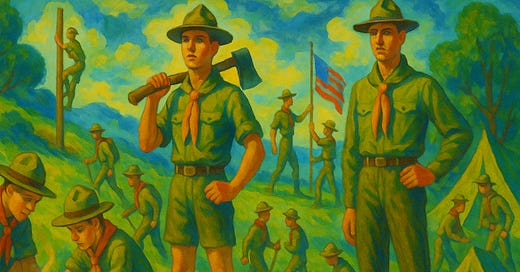






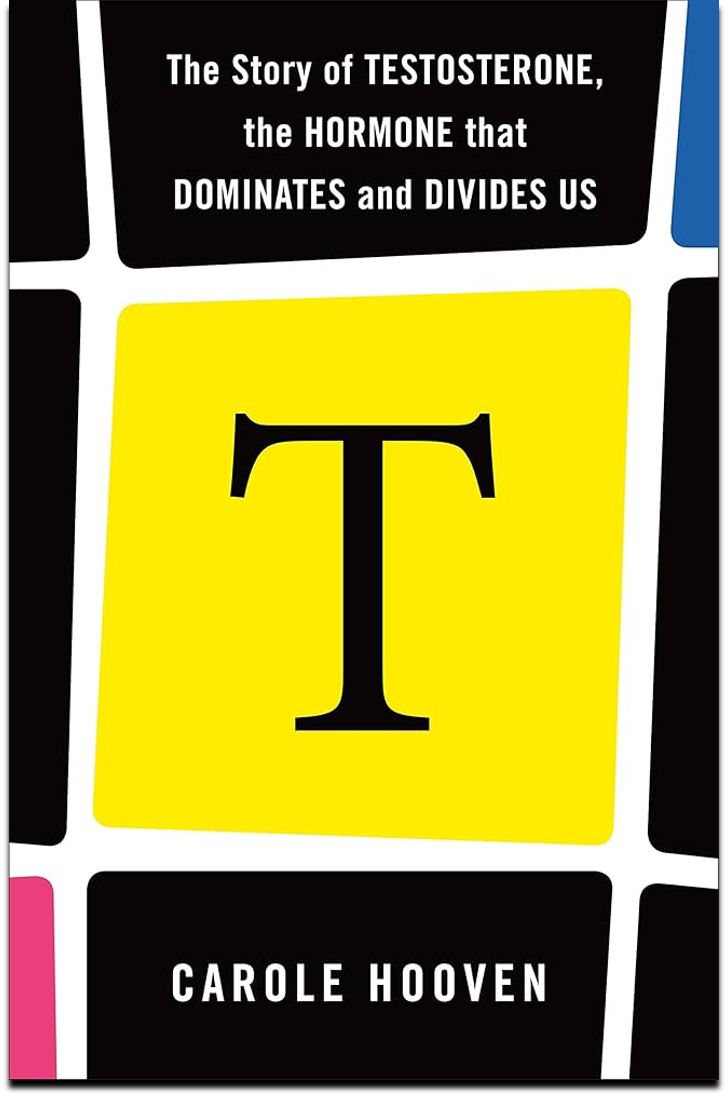
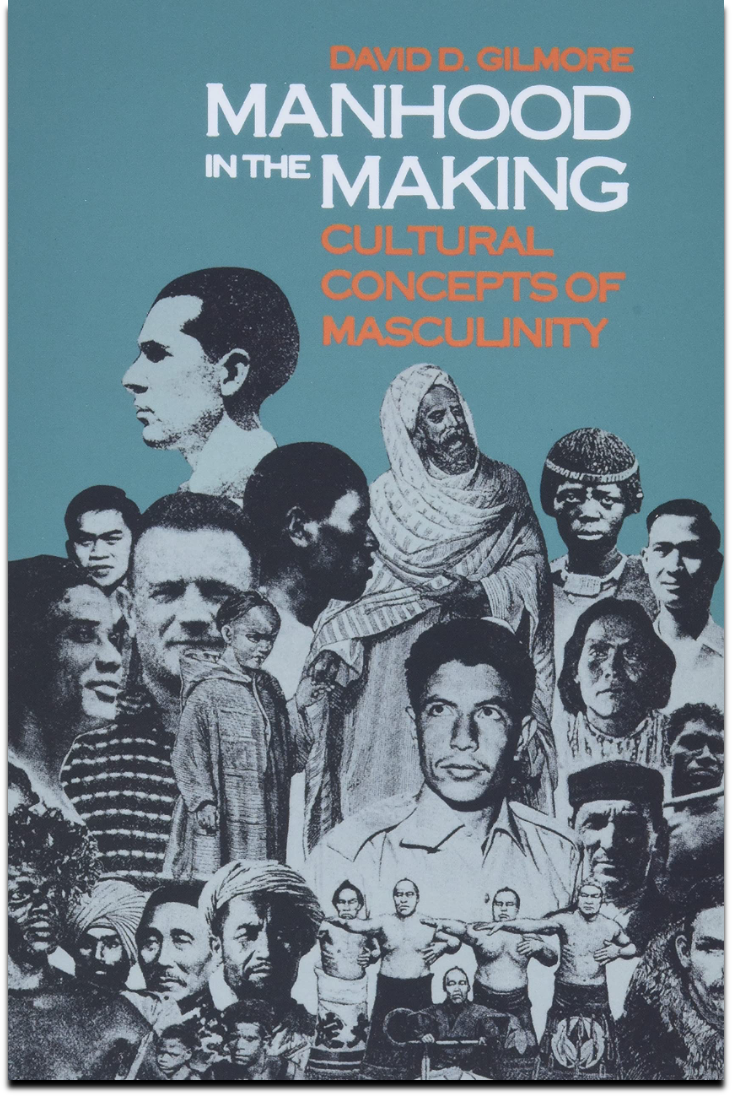



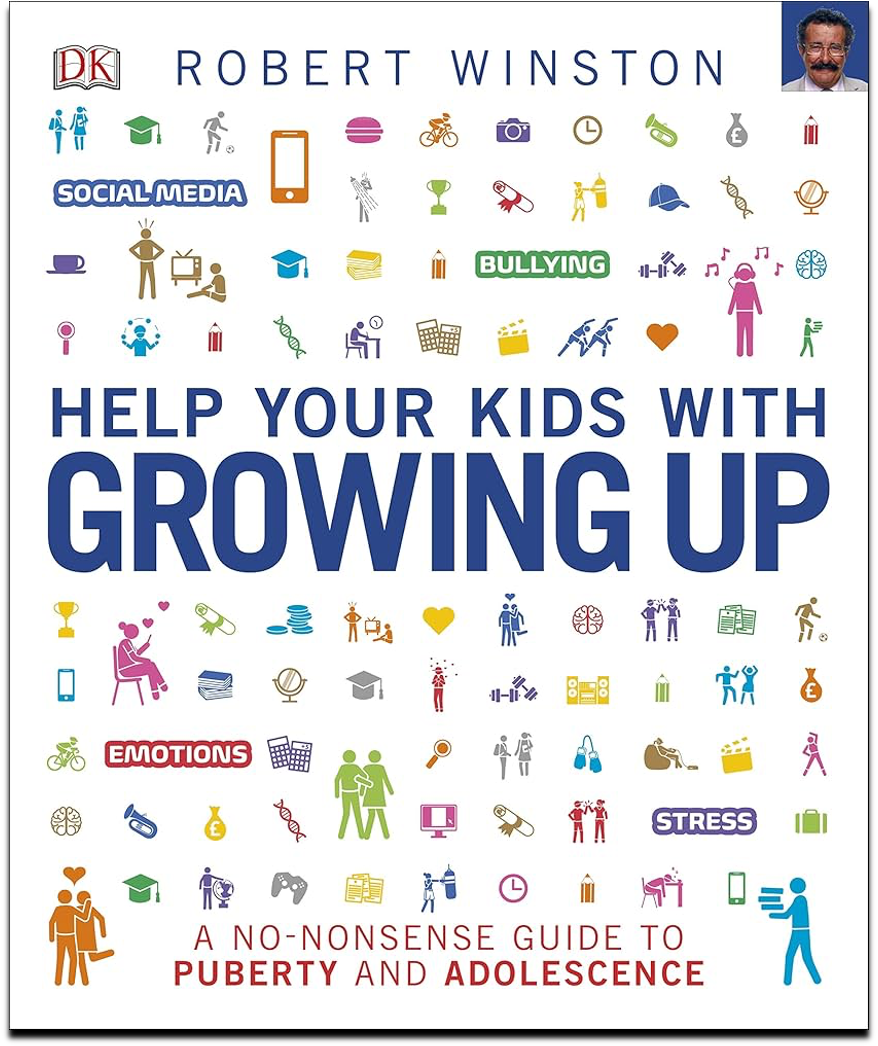
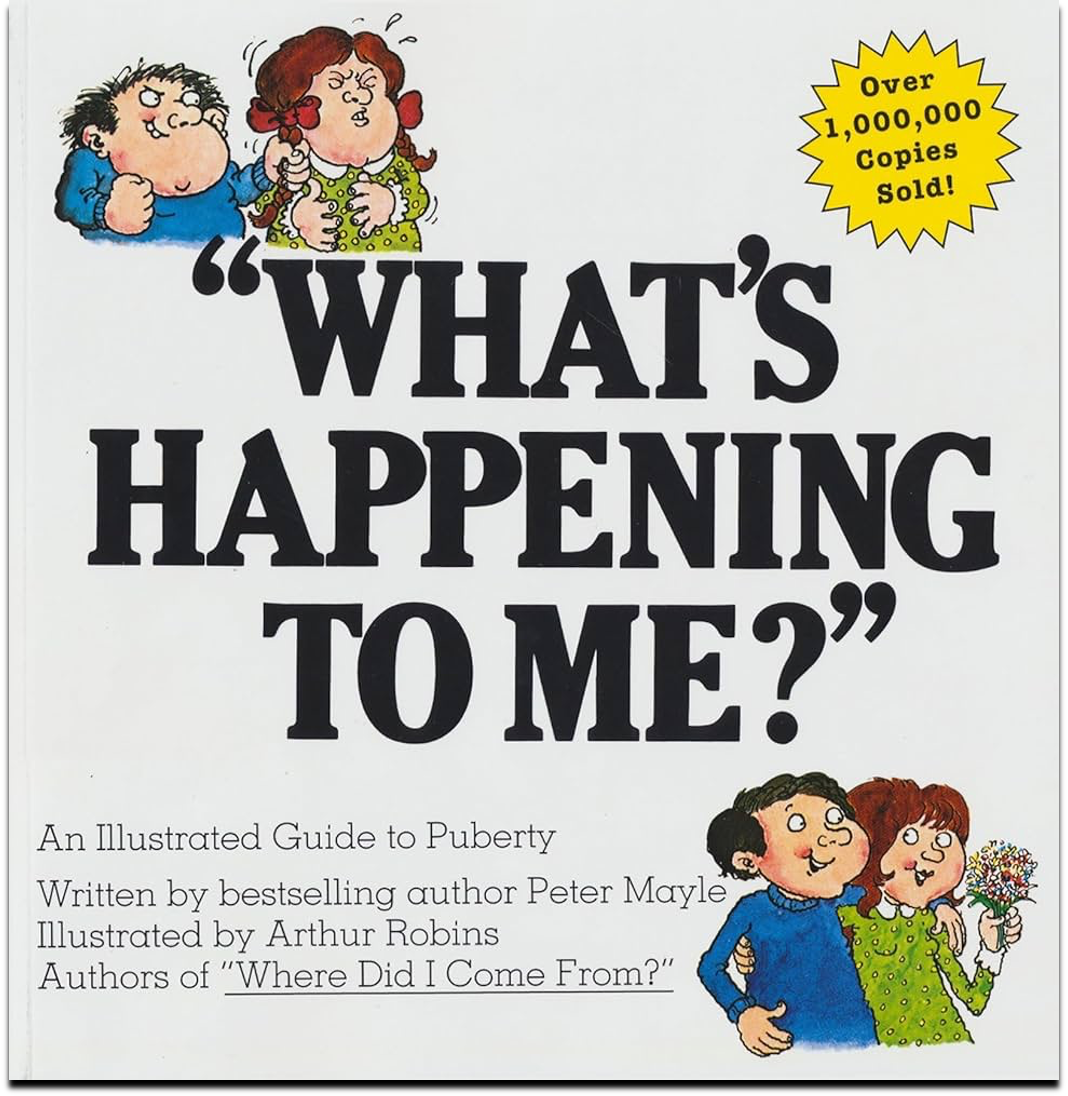
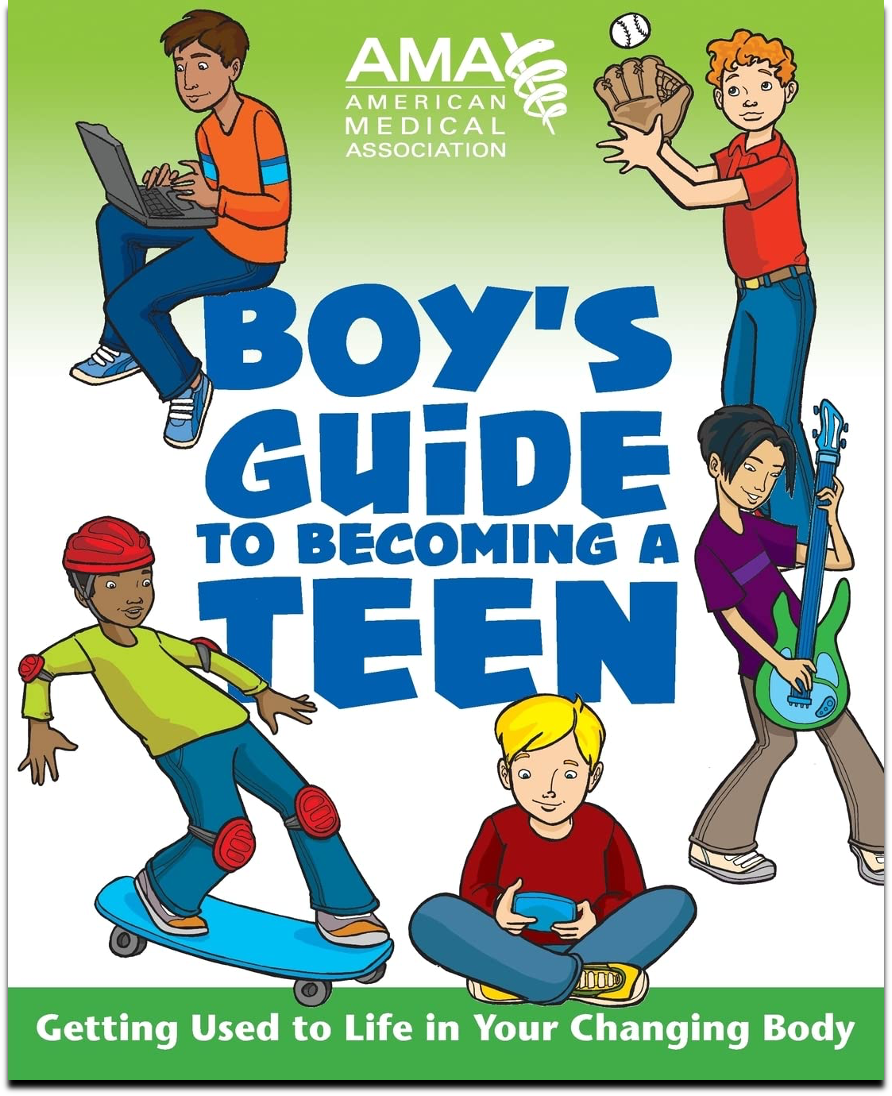
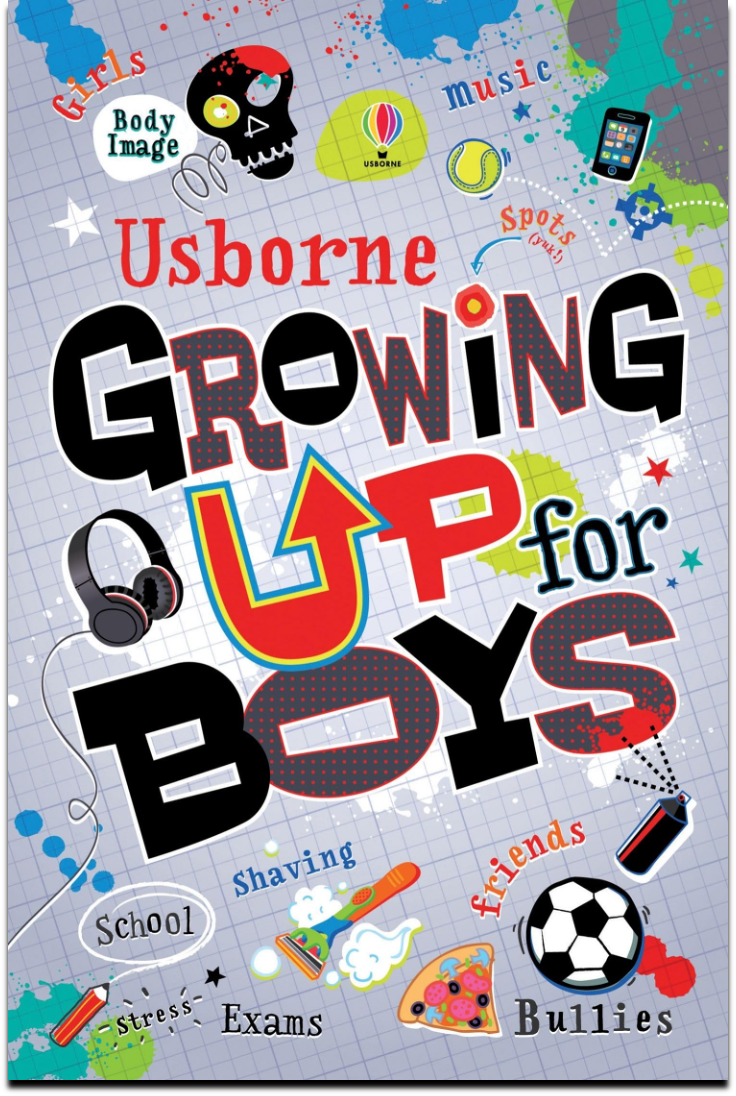
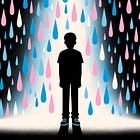




We need to be able to openly say that there are things that boys/men are more likely to be better at. And not just physical things. The reverse is also true, but I don't get emails in my inbox from companies I've bought stuff from trying to convince me otherwise.
You mention that biological essentialism has a rightfully bad name and one reason is that historically (and lets face it, currently) women's biology has led us to believe they are destined to have children and be caretakers. But honestly I don't know why that's an example of biological essentialism gone bad. Women's biology and psychology does lend them to those jobs and without the luxury of the Industrial Revolution, all people did the jobs that were most needed by them.
One could also argue that biological essentialism led to my father and grandfather being drafted to fight in wars the last century. Very rarely do I see that example brought up as a sexist result of bio essentialism. Maybe it's just my family, but the men did what they needed to do to fulfill their role (manual labor/factory work), and it wasn't a choice they had. I think if we want to fight against blank slateism we need to at least acknowledge that we aren't just into biological truths because we want to keep women down and that those truths do also have negative impacts on men.
I fear that if we don't allow women (generally) to be less capable of anything than men (generally), then trying to bring back any chivalric behavior will fall on deaf ears. You can't tell young men both that they need to be extra respectful and protective of women and girls while also telling them that those same women and girls are equally capable in all ways. And the boys definitely see that the girls are not being told to be equally respectful of them. The one-way street is obvious.
Anyway, those were just some ideas I had while reading this. It's a great article tackling a subject that doesn't get much mainstream attention, but hopefully we can change that.
This is a very intriguing piece. And it dovetails well with several of the other explanatory theories for what is happening.